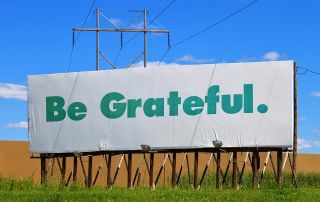Leadership
Long-Term Leadership Is Evolutionary
The fittest leaders adapt to survive and excel.
Posted May 20, 2024 Reviewed by Hara Estroff Marano
Key points
- To lead over the long term, you should be able to adapt to change—quickly and strategically.
- Contingencies should be built into every long-term plan.
- Building a nimble team is crucial to effective planning.
- Plans, like people, evolve as circumstances change.

Consider the vagaries of long-term planning. What may seem like a plan can, over time, become subject to multiple contingencies. So, how do you deal with them so that you can keep going?
You might ask yourself:
- Am I able to lead a project in an uncertain environment where it is necessary to think on my feet and adapt to changed circumstances?
- Do I know how to balance quick rewards with long-term goals, so that I can keep my eye on my main objectives?
- Can I build a team that will further my plans even as uncertainty continues to affect those plans?
- How well do I handle stress, and can I step back when I must make changes, to protect my mental health?
Adaptability is a form of resilience that, in turn, allows you to navigate in challenging, non-linear environments.
Consider my client, George. His company made digital billboards that, he boasted, could read people’s minds—virtually—as digitally master-minded messages changed in relation to the traffic beneath them. They relied on AI-generated logarithms that profiled the people from hour-to-hour.
George had founded the company, Digital Roadshow (DR), about fifteen years ago. But when he came to see me a few years ago, he felt that no matter how much success he had, it was tiny compared to the $8 billion a year. spent on billboards in the U.S. “DR could lead a revolution away from ineffective, static signage to AI-powered, dynamic billboards.” He felt ready. But what he needed, he told me, was market access.
The market for billboards is largely saturated. Few highway authorities or city governments will grant permits for more billboards, and existing billboards are subject to long-term easements. DR’s billboards were in suburban areas that had recently acquired high-tech campuses, leading to more shoppers at the surrounding malls. DR’s market, it seemed, might be limited to such new, middle-class suburbs, bypassing core cities where traffic would always be significantly greater.
George asked me whether I thought he could break out of this pattern.
He outlined a massive project to place billboards on roadways across L.A.,and in local Metro rail stations where advertising was not yet allowed. L.A. is 502 square miles. The prospect was eye-popping.
“This could take several years,” I told him, “even assuming that circumstances don’t change, which they always do.” George needed a long-term plan as well as sufficient organization to see it through. I suggested that we draw up a plan. “A plan is an investment,” I said. “If it works, you can adapt it to other projects.”
George gave himself two years. “First,” he said, “I need to hire lobbyists to present the deal to the district boards. Then it will need to be approved by the city council, and then the mayor will sign off.”
“But suppose the city council falls through,” I said. George thought a moment. A snag? He’d prep his lobbyists for contingencies. In long-term plans, the contingency can overtake priorities, and I stressed that. Better still, you should anticipate likely contingencies and build them into the plan using a type of decision-tree model (if-this-then-that).
As we spoke, I reminded him about hiring a lawyer, and suggested that he budget for legal fees. A budget, in fact, is an initial plan and accounts for all the major players. The plan would be as much about people as about making the right moves. The two are often inseparable.
The district councils supported the project, but at the city level, there were doubters. The result was a six-month setback.
Uh oh, another contingency.
But then, just as a majority seemed to re-emerge, the proposal ran into another snag. A local paper denounced “visual pollution.” This set him back another few months.
“Do I still have a plan,” he asked me, “or just mounting delays?” I observed that planning demands having confidence in the plan. “You should be willing to accept the planning process as nonlinear,” I said. In fact, the longer the term of the plan, the less linear the process tends to be.
But still, I questioned whether the new timeline was realistic, even if he maintained current sales. “What if the project takes three years? Or four?” Would the additional effort —and added expense—still be worth it?
There is always an inflection point in every plan when costs vs. benefits need to be weighed honestly, irrespective of how hope may tip the balance. George understood where he stood, and chose to move ahead.
He told me that for him, planning (as well as the follow-through organization) had become an organic process. “If I am directing things,” he said, “I’m also being directed by how things develop.” Clearly, George’s idea of leadership had evolved along with the ups and downs of his project. “I’m making the most of where I am at any point,” he said, “changing course to move ahead.”
As he kept going, there were more snags. But his overall finances had become so leveraged that traditional banks refused to lend him any more capital. Ultimately, he took on a silent partner with a small stake I the business.
Yet the silent partner had ideas. With connections in Ontario, Canada, he thought there was an opening for DR. That is, with all that George had learned from L.A. politics, DR could convince the provincial government to let it put up billboards as the road system expanded. But the real message was that now, since George had a plan responsive to serial hard knocks, he would be a more agile operator.
After this much-extended process, George could claim some important take-aways:
- When long-term plans do not follow their intended course, contingencies will develop that must be addressed
- The longer the planning process continues, the less linear the plan is likely to become, as each new contingency requires a degree of redirection
- Budgeting is a form of planning, and the addition of staff—a part of the budgeting process—is itself a form of planning
- When a plan keeps resorting to “if,” it’s less a plan than an aspiration
- Maintaining your mental health—that is, your ability to manage continued stress—must be part of any long-term plan
George learned to adapt, to go with the flow of contingencies that developed. Long-term plans may look nothing like what they started out as, but that’s okay, provided you can follow through with effective organization.




